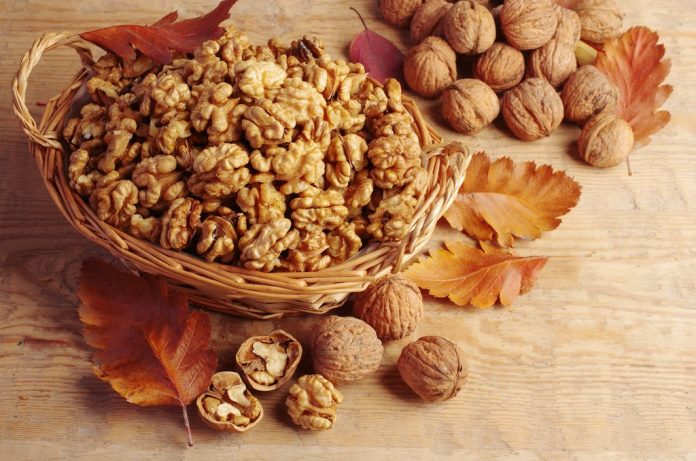Protein|Iron|Aromatherapy|Massaging the scalp|Pumpkin seed oil|Saw palmetto|Hair loss causes|Prevention|When to see a doctor
Hair growth depends on several factors, including a person’s genetic history. However, there are some home remedies that may help.
Whether a person is trying to prevent hair loss or encourage more growth, knowing some tips on diet and how to treat the hair can help them achieve their goal.
When hair loss is due to a medical condition, however, it is best to speak to a doctor about appropriate treatments.
The following home remedies may encourage hair growth:
1. Eating more protein
The body needs protein to grow new hair. Hair loss can arise due to a protein deficiency.
Examples of healthful dietary protein sources include:
beans
eggs
fish
nuts
lean meats
seeds
A person’s daily protein needs vary based on how physically active they are and how much muscle mass they have
2. Increasing iron intake
Iron is another nutrient the body requires to grow healthy hair. Some dietary iron sources include:
clams
lentils
oysters
pumpkin seeds
spinach
white beans
lean beef
turkey
Many manufacturers also fortify their foods with iron, which means that they have added iron to them.
People who do not eat meat have iron requirements as high as 1.8 timesTrusted Source those of people who do eat meat. This is because the body does not absorb nonanimal sources of iron as effectively.
3. Trying aromatherapy
According to the authors of 2011 study paper, aromatherapy can help stimulate hair growth.
Examples of herbs that aromatherapy practitioners may use to promote hair growth include:
cedarwood
lavender
rosemary
thyme
tulsi
When using essential oils on the scalp, be sure to mix only a few drops into a carrier oil, such as coconut oil or walnut oil. The researchers also state that inhaling the scent of these oils may affect hair growth.
More research is necessary to determine whether essential oils are an effective solution for hair growth.
Some people may experience topical allergic reactions when using essential oils, so it is best to try a small test patch 24 hours before applying the mixture to the whole head.
4. Massaging the scalp
Massaging the scalp helps stimulate blood flow to the scalp, which could help encourage hair growth.
A small Japanese studyTrusted Source found that men who massaged their scalps for 4 minutes per day with a scalp massage device had thicker hair after 6 months.
People can use the pads of their fingertips to massage the scalp in gentle circles. Devices to massage the scalp are also available in drug stores and online.
5. Using pumpkin seed oil
The authors of a 2014 studyTrusted Source looked at whether pumpkin seed oil could help hair growth.
They discovered that men taking 400 milligrams (mg) of pumpkin seed oil for 6 months experienced a 40 percent increase in average hair count, whereas those taking a placebo only experienced a 10 percent increase.
The men all had a history of androgenic alopecia, or male pattern baldness. They were not currently taking other supplements for hair loss and were between 20 and 65 years old.
6. Taking saw palmetto
A 2-year-long studyTrusted Source found that supplementation with saw palmetto may increase hair growth in men with male pattern baldness.
The participants took 320 mg of saw palmetto every day for the duration of the study.
After 2 years, the participants experienced hair growth primarily in the vertex, or the top and back of the scalp. This is a common site for bald spots in men.
Causes of hair loss
Many people experience aging-related hair thinning or male or female pattern balding.
Doctors tend to divide hair loss not related to age into two major categories: scarring and non-scarring hair loss. Generally speaking, scarring hair loss is permanent. Examples of scarring hair loss causes include scarring alopecia.
Non-scarring hair loss causes can include alopecia areata (hair loss in patches) or telogen effluvium.
Telogen effluvium causes hair follicles to remain in a resting state. As a result, a person’s hair does not grow as quickly or as much as it once did.
This condition can be the result of the following “shocks” to the body:
giving birth
having a fever
having an inadequate protein intake
undergoing major surgery
having a severe chronic illness
ïtaking certain medications, such as antidepressants, beta-blockers, calcium channel blockers, or retinoids
Prevention
Eating a nutritious diet and keeping stress levels low can help prevent hair loss and encourage hair growth.
In addition to these steps, other ways to encourage hair growth include:
not using hair accessories that can cause hair breakage, such as hairpins, clips, and rubber bands
avoiding styling products that can damage and break the hair, such as blow-dryers set to a high heat, straightening irons, and curling irons
limiting the use of bleach, relaxers, and hair dyes
avoiding excess shampooing or brushing
when the hair is wet, avoiding brushing it or applying plastic or rubber hair ties
Treating the hair as gently as possible can help preserve it and minimize the rate of hair loss.
Sometimes, however, hair loss is inevitable due to age.
When to see a doctor
Hair loss is not necessarily a condition that affects a person’s overall health, but it can greatly impact their mental well-being and self-esteem.
A person should see their doctor if they are concerned about hair loss, especially if they are taking supplements or have made dietary changes and are losing hair.
A doctor may recommend seeing a dermatologist, who can conduct additional testing if necessary to determine appropriate treatments.
Summary
Some aspects of hair growth, such as genetics, are out of a person’s control. However, a person may see improved hair growth if they follow a healthful and nutritious diet.
Using some home remedies and taking good care of the hair may help enhance thickness and growth. If a person is concerned about hair loss or growth, they should talk to a doctor.































